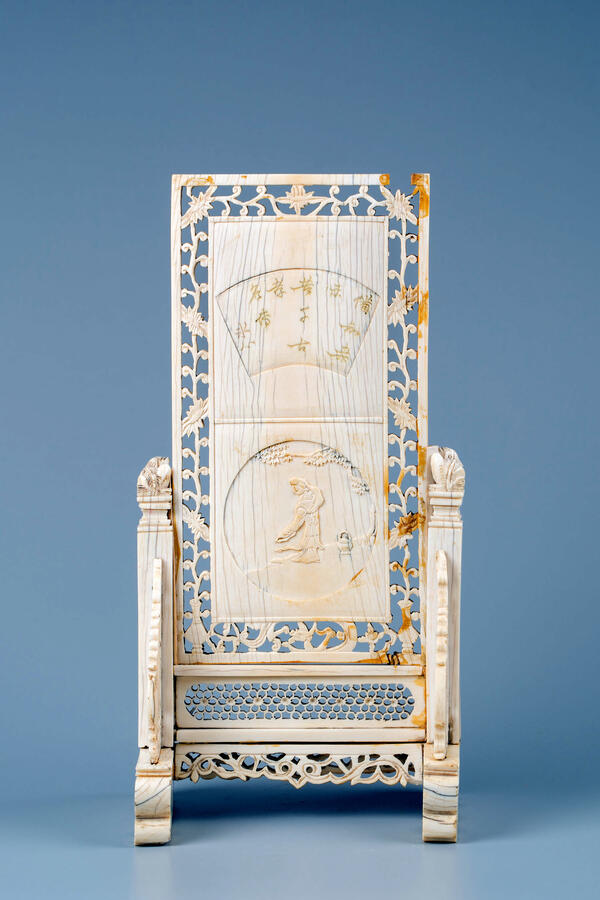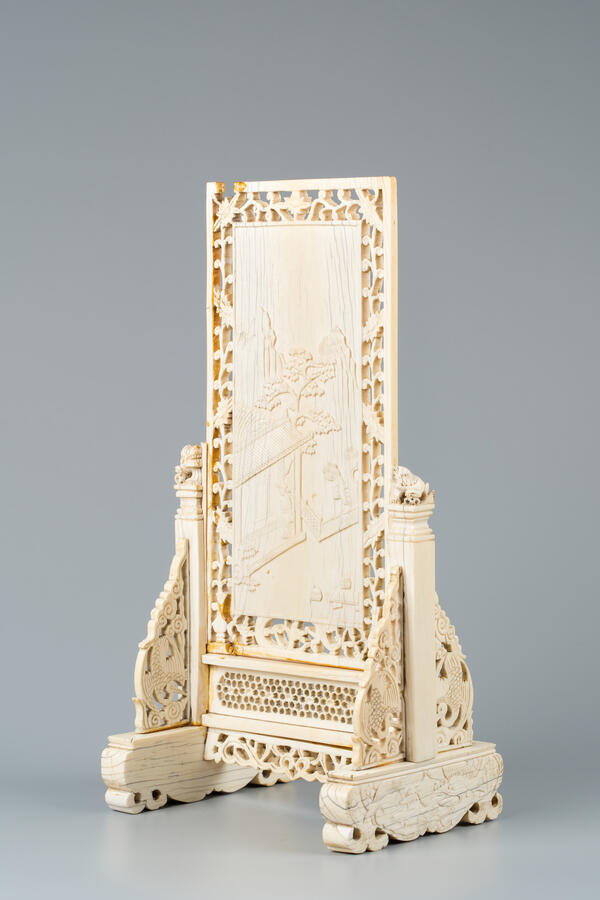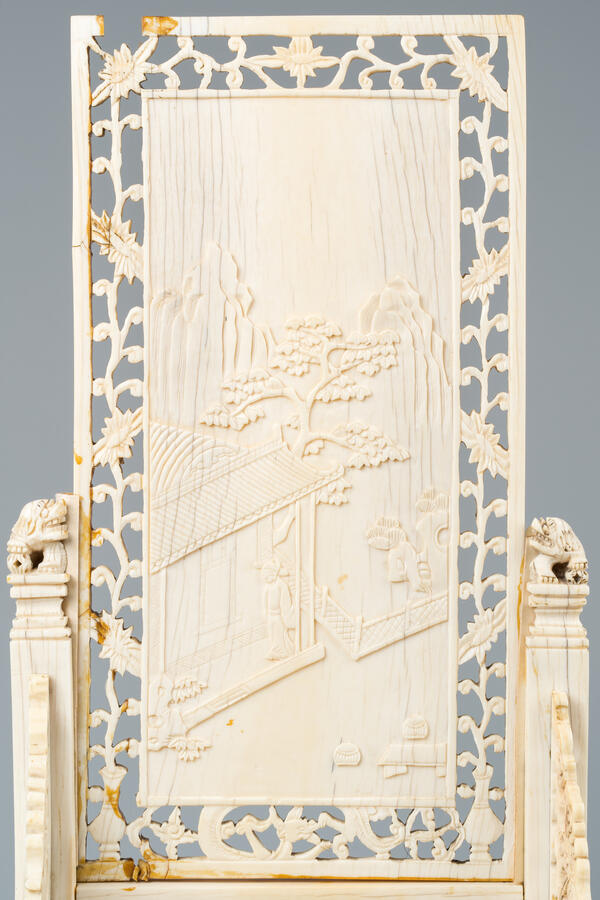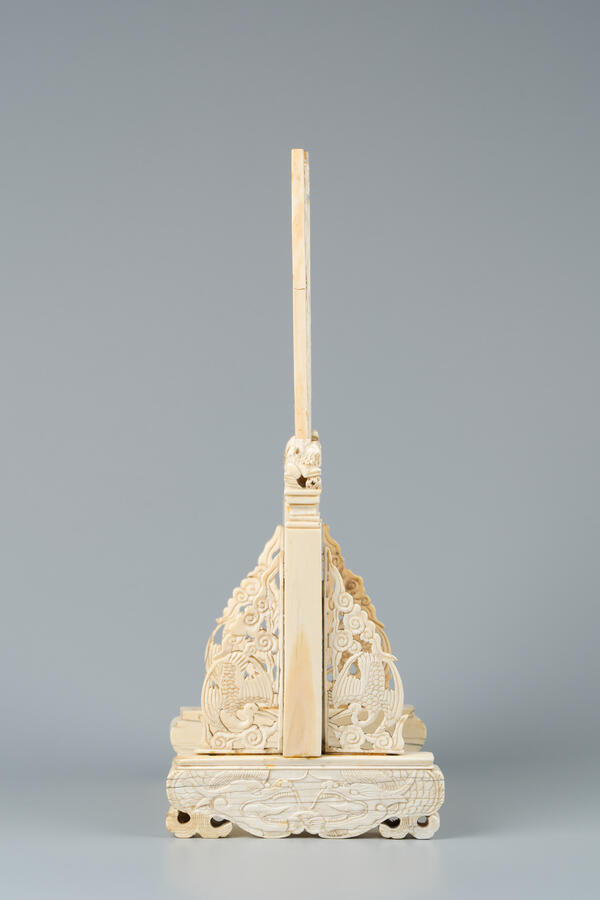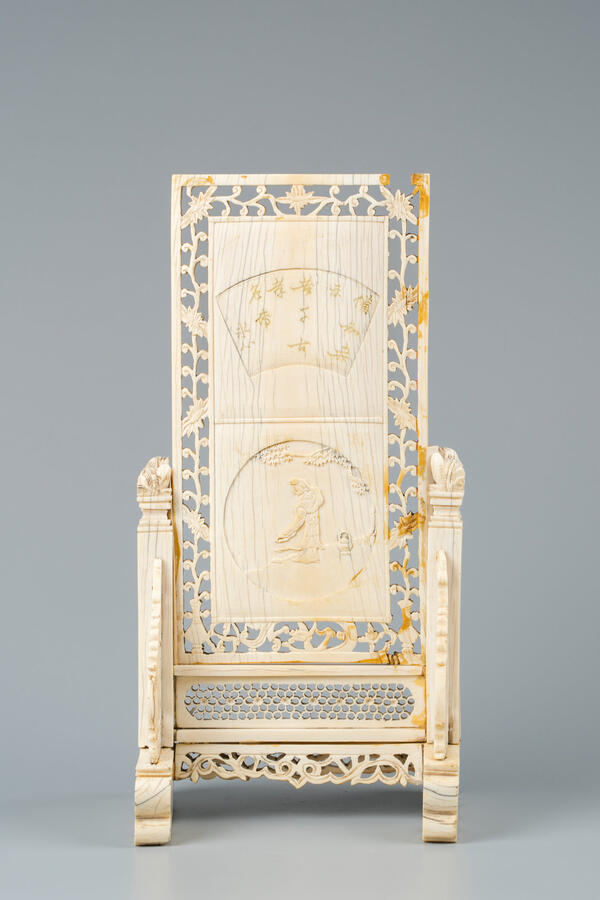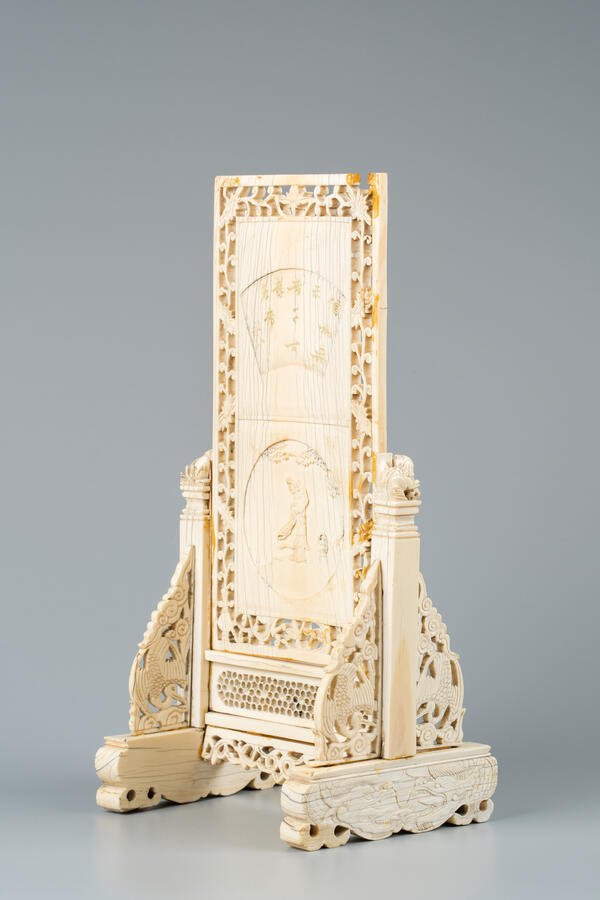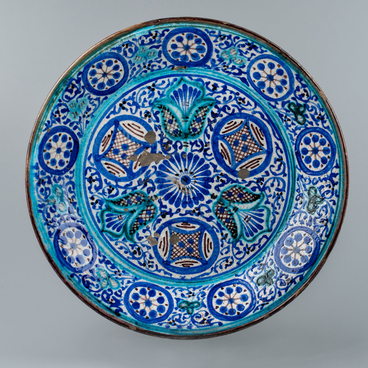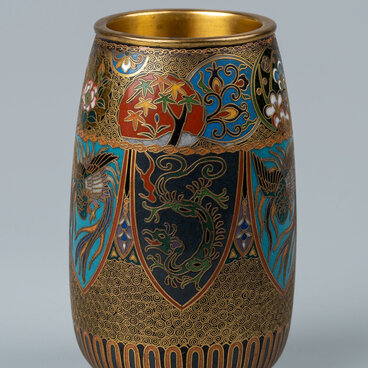The Samara Regional Art Museum presents an elegant 18th–century table screen made of ivory. The screen was intended as a desk decoration, it could also be used to protect a candle flame from wind blows.
The screen is decorated with openwork carvings and relief compositions. One can see the image of a poet in a pavilion against the background of a landscape on one side, and a dancing girl on the other side. The stand is adorned with symbolic images of dragons, lions of Fo and cranes. Judging by the whiteness of the screen and elaborate décor, it can be assumed that the screen was created in a Cantonese workshop (Guangzhou, southern China). This exhibit vividly exemplifies the skill of Chinese bone carvers.
In China, bone carving is one of the earliest techniques of decorative and applied arts. The first pieces of ivory and rhinoceros horns found by archaeologists are dated to the Neolithic era. Daggers and rulers made of ivory were discovered during archaeological digs at the ruins of the capital during the Ying dynasty, which existed 3,700 years ago. This craft was further developed during the reign of the Song Dynasty (960 — 1279), and was improved during the Ming (1368 — 1644) and Qing (1644 — 1911) dynasties.
Chinese bone carving is distinguished by refined compositions, a meticulous elaboration of the smallest details, and an abundant use of national motifs. Two main schools of bone carving were formed in China — in Canton (Guangzhou) and in Beijing. The technique of Cantonese masters is characterized by subtlety and luxurious décor, as well as whiteness of the items. In Guangzhou, ivory was bleached, which is why it acquired a shining white color. The Beijing school gravitated towards a more restrained décor and conciseness. In general, Beijing artists created figurines of people and tinted the bone for a greater decorative feel. Their products were distinguished by careful polishing, which emphasized the natural texture of the bone.
This kind of folk art requires great care and attention. The artist must take into account not only their own idea, but also the peculiarities of the location of the main core of dentine in the tusk. As a rule, the artisan first carves the bone, giving it a rough shape, and only then uses finer tools to give it a complete look.
The screen is decorated with openwork carvings and relief compositions. One can see the image of a poet in a pavilion against the background of a landscape on one side, and a dancing girl on the other side. The stand is adorned with symbolic images of dragons, lions of Fo and cranes. Judging by the whiteness of the screen and elaborate décor, it can be assumed that the screen was created in a Cantonese workshop (Guangzhou, southern China). This exhibit vividly exemplifies the skill of Chinese bone carvers.
In China, bone carving is one of the earliest techniques of decorative and applied arts. The first pieces of ivory and rhinoceros horns found by archaeologists are dated to the Neolithic era. Daggers and rulers made of ivory were discovered during archaeological digs at the ruins of the capital during the Ying dynasty, which existed 3,700 years ago. This craft was further developed during the reign of the Song Dynasty (960 — 1279), and was improved during the Ming (1368 — 1644) and Qing (1644 — 1911) dynasties.
Chinese bone carving is distinguished by refined compositions, a meticulous elaboration of the smallest details, and an abundant use of national motifs. Two main schools of bone carving were formed in China — in Canton (Guangzhou) and in Beijing. The technique of Cantonese masters is characterized by subtlety and luxurious décor, as well as whiteness of the items. In Guangzhou, ivory was bleached, which is why it acquired a shining white color. The Beijing school gravitated towards a more restrained décor and conciseness. In general, Beijing artists created figurines of people and tinted the bone for a greater decorative feel. Their products were distinguished by careful polishing, which emphasized the natural texture of the bone.
This kind of folk art requires great care and attention. The artist must take into account not only their own idea, but also the peculiarities of the location of the main core of dentine in the tusk. As a rule, the artisan first carves the bone, giving it a rough shape, and only then uses finer tools to give it a complete look.

